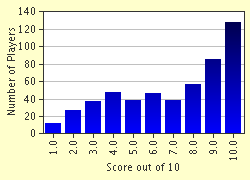Quiz Answer Key and Fun Facts
1. Three of these are birds, can you spot the butterfly?
2. These can all fly but which one has feathers?
3. Which one of these do you think is a butterfly?
4. These are all colourfully-named species but can you find the bird?
5. Which one of these undergoes complete metamorphosis?
6. Four more colourful names- but which one can sing?
7. Can you find the butterfly here?
8. Here are four unusual names; three of them are butterflies, but can you identify the bird?
9. Size obviously matters to these four species. Which one do you think is the butterfly?
10. Can you spot the bird in this list?
Source: Author
mutchisman
This quiz was reviewed by FunTrivia editor
crisw before going online.
Any errors found in FunTrivia content are routinely corrected through our feedback system.

